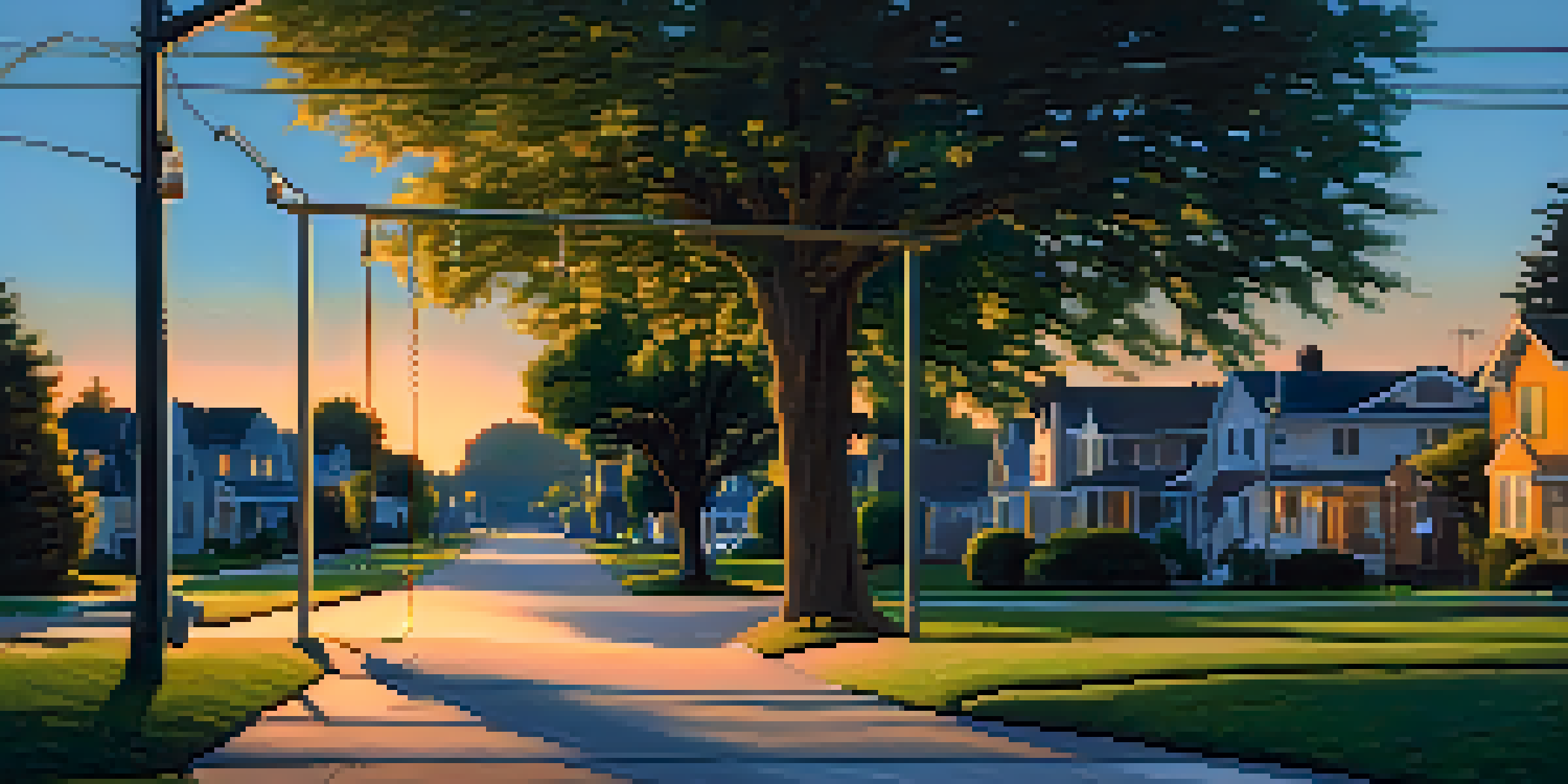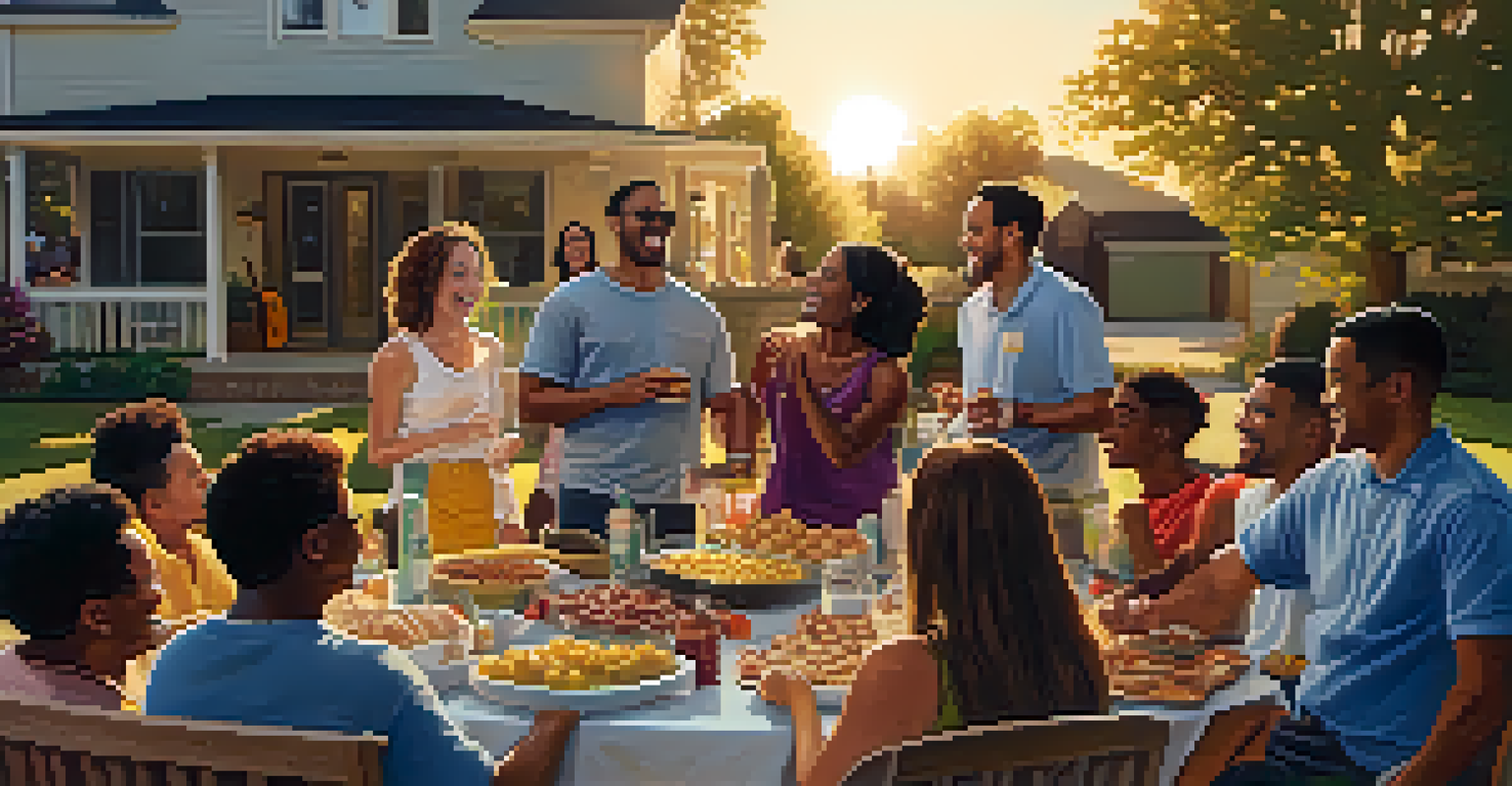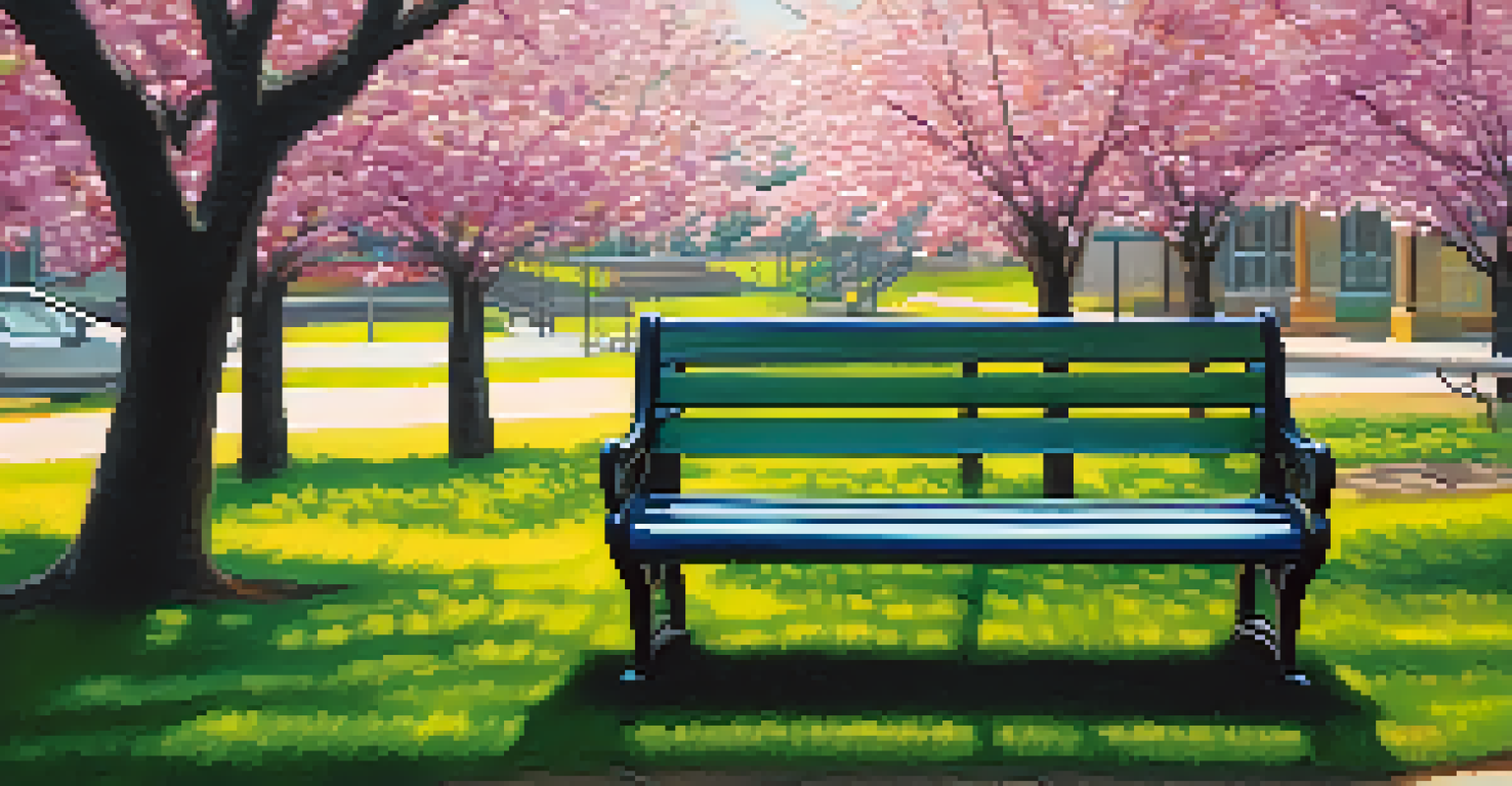Art and Isolation: The Suburban Experience Explored

The Suburban Landscape: A Canvas of Isolation
Suburban areas often conjure images of sprawling lawns and quiet streets, yet beneath this picturesque exterior lies a unique sense of isolation. Unlike the bustling urban centers, suburbs can feel disconnected, where neighbors may not know each other well despite living just a stone's throw away. This landscape creates an ideal backdrop for artists seeking to explore themes of solitude and introspection.
Art is the most beautiful of all lies; it is a lie that reveals the truth of our existence.
Art in these settings can serve as a mirror reflecting the complexities of suburban life. For instance, works that depict empty streets or abandoned properties can evoke feelings of loneliness, prompting viewers to ponder their own experiences of isolation. These artistic expressions resonate deeply, inviting individuals to explore their emotional landscapes.
Moreover, the very nature of suburbia fosters a distinct kind of artistic expression. Artists often draw inspiration from everyday scenes—children playing in the park or families gathered for a barbecue—while simultaneously highlighting the underlying currents of disconnection that can exist within these seemingly perfect moments.
Art as a Tool for Connection in Isolation
While isolation is a prevalent theme, art can also act as a bridge, fostering connections among suburban residents. Community art projects, such as murals or collaborative installations, encourage participation and dialogue, transforming spaces into shared experiences. These initiatives not only beautify neighborhoods but also instill a sense of belonging and camaraderie.

For example, a local artist might organize a mural painting day, inviting residents to contribute their ideas and skills. This not only provides an outlet for creative expression but also nurtures bonds between participants, reminding them that they share a common space and experience. The resulting artwork becomes a testament to their collective identity.
Isolation in Suburban Art
Art often reflects the unique feelings of isolation experienced in suburban areas, using themes and techniques to evoke emotional responses.
Additionally, public art installations can spark conversations among passersby, creating unexpected connections. The mere act of stopping to admire a piece can lead to shared stories and reflections, helping to dissolve the barriers of isolation that suburban life can impose.
Personal Narratives: The Intersection of Art and Emotion
Personal narratives play a crucial role in both creating and interpreting art within suburban settings. Artists often draw from their own experiences of isolation to produce works that resonate with others facing similar feelings. By sharing these stories, they not only validate their emotions but also invite others to reflect on their journeys.
The role of the artist is to ask questions, not to answer them.
For instance, a photographer might document the daily routines of suburban life, capturing moments of solitude amidst the hustle and bustle. Each image tells a story, revealing the quiet struggles and joys that often go unnoticed. This sort of storytelling can be incredibly powerful, as it fosters empathy and understanding among viewers.
Moreover, by opening up about their experiences, artists contribute to a broader dialogue about mental health and emotional well-being. This transparency can encourage others to confront their feelings of isolation, reminding them that they are not alone in their struggles.
The Role of Digital Art in Suburban Isolation
In today's digital age, technology has transformed the way we create and engage with art, especially in suburban environments. Online platforms allow artists to showcase their work to a broader audience, breaking down geographical barriers. This accessibility helps individuals feel connected to larger artistic movements, even from the comfort of their homes.
Digital art also offers unique opportunities for collaboration and community building. Artists can work together on projects remotely, sharing ideas and techniques without the constraints of physical distance. This sense of collaboration can be particularly empowering for those who feel isolated in their suburban surroundings.
Art as a Connector
Community art projects transform isolation into connection, encouraging participation and dialogue among suburban residents.
Furthermore, social media serves as a vital tool for artists to share their experiences and connect with others. Through platforms like Instagram or TikTok, they can reach audiences who may resonate with their themes of isolation, sparking conversations that transcend suburban boundaries.
Isolation in Suburban Art: Themes and Techniques
When exploring isolation in suburban art, several recurring themes and techniques emerge. Artists often use symbolism to convey feelings of loneliness, such as empty chairs or desolate landscapes. These visual cues invite viewers to reflect on their emotional states and the nuances of their own experiences.
In addition, the use of color can significantly impact how isolation is perceived. Muted tones might evoke a sense of melancholy, while brighter hues can suggest hope amid solitude. By carefully choosing color palettes, artists can manipulate the emotional responses of their audience.
Moreover, the juxtaposition of familiar suburban imagery with elements of isolation creates a striking contrast. For example, a vibrant garden filled with flowers might be set against a backdrop of an empty street, highlighting the tension between beauty and loneliness that permeates suburban life.
Artists Who Capture the Suburban Experience
Several contemporary artists have gained recognition for their work that delves into the themes of isolation within suburban settings. For instance, the photography of Gregory Crewdson often portrays eerily quiet suburban neighborhoods, inviting viewers to ponder the lives of the inhabitants. His staged scenes capture the essence of solitude, leaving a lasting impression.
Similarly, the work of painter Andrew Wyeth reflects the beauty and isolation of rural and suburban landscapes. His use of light and shadow creates a haunting atmosphere, drawing attention to the emotional weight of his subjects. Wyeth's art resonates with those who understand the complexities of suburban life.
Digital Platforms Enhance Engagement
The rise of digital art and social media enables artists to reach wider audiences, fostering connections and discussions around themes of isolation.
These artists, among others, remind us that art can serve as both a reflection of and a response to our experiences. By capturing the nuances of suburban isolation, they encourage us to engage with our surroundings and consider the emotional landscapes that shape our lives.
The Future of Art in the Suburban Landscape
As we look to the future, the intersection of art and suburban life will likely continue to evolve. With the growing emphasis on mental health and community engagement, more artists may seek to address themes of isolation through their work. This shift could lead to a richer understanding of the suburban experience, fostering connections between individuals.
Furthermore, the rise of technology will likely play a significant role in shaping future artistic expressions. Virtual reality and interactive installations could provide new avenues for exploring isolation, allowing audiences to immerse themselves in the art experience. Such innovations may help bridge the gap between physical and emotional spaces.

Ultimately, as artists continue to navigate the complexities of suburban isolation, they will play a crucial role in sparking conversations and fostering connections. Through their work, they can remind us of the importance of community and the shared experiences that bind us together, even in our most isolated moments.